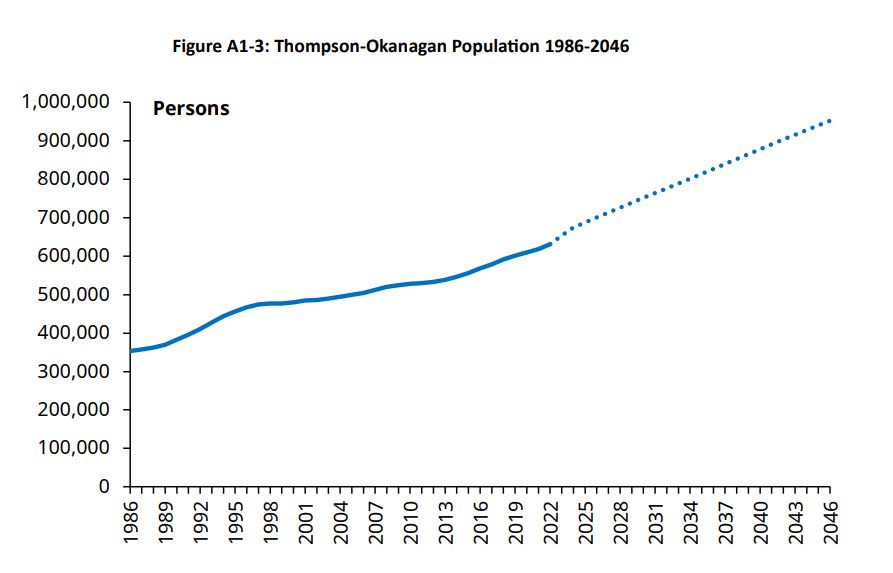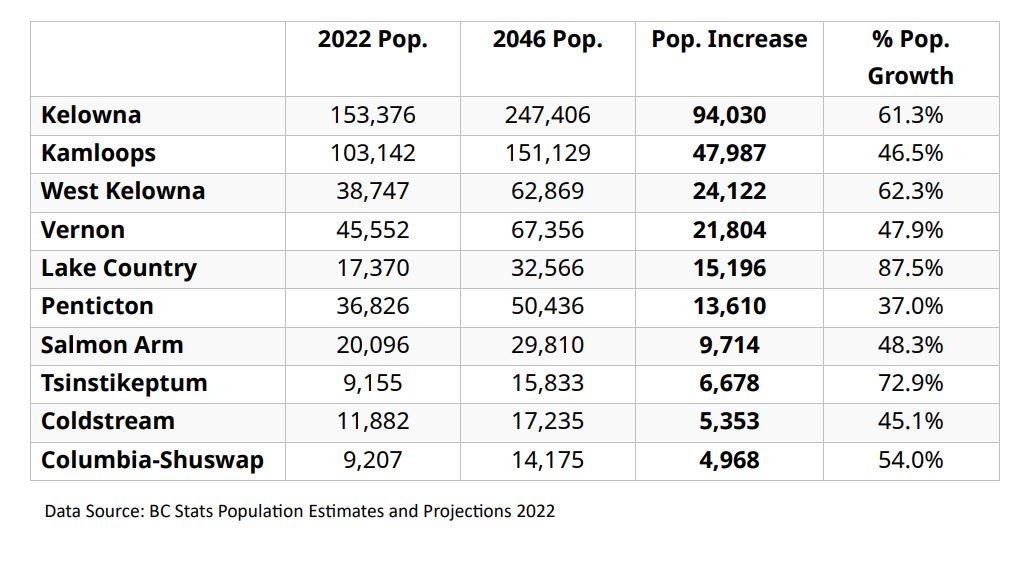Think traffic is bad at times in the Central Okanagan? Give it 20 years, when the region’s population will be significantly larger than it is now.

In 2046, it’s estimated that the Central Okanagan will be home to 383,000 people –120,000 more than the current population figure of 255,000.
This week, the provincial government released population figures across B.C., with Kelowna having an estimated 153,000 residents in 2022. But by 2046, that number is expected to grow 61.3 per cent to 247,000.

That’s an increase of 94,000 residents for the Interior’s largest city – by far the largest growth in the region.
In 2021, Kelowna’s population was 146,409, and the 2023 estimate is projected at 159,857. For 2024, Kelowna’s population estimate is 165,997.
Elsewhere in the Okanagan, West Kelowna is expected to grow 62.3 per cent by 2046, from its 2022 population estimate of 38,745 to 62,000.

Get daily National news
Notably, West Kelowna recently moved past Penticton (36,821) as the region’s third-largest city. The population for 2023 is estimated at 40,506, with 2024 projected at 42,133.
Vernon, the Okanagan’s second-largest city at 45,54, is expected to grow 47.9 per cent to 67,356.
Growth of 48 to 62 per cent is massive. However, Lake Country is projected to grow a stunning 87.5 per cent by 2046.

Currently, the small community has a population of 17,370, but that should reach 32,566 in two decades.
Penticton is projected to grow 37 per cent to 50,436 by 2046, while Salmon Arm could see it expand from its current population of 20,096 to 29,000 (48.3 per cent).
More information is available on the provincial government’s website.










Comments